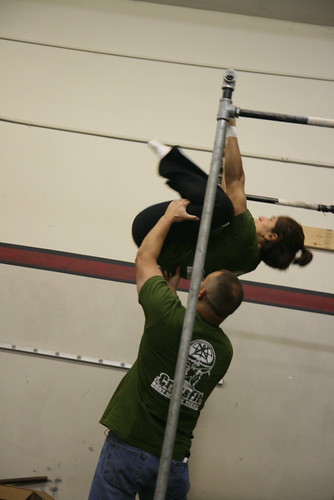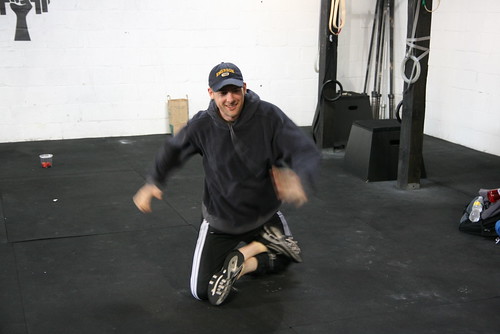On Coaching: Part 3
Learning (Dis)Abilities
Once a coach has learned the model, the next step is to effectively convey the model to the athlete in a way that they understand it and can emulate it. Communication skills are vitally important and need to be cultivated.
No matter how great your model of the exercises, it’s not worth anything if you cannot communicate it to your athletes. Communication is not about what you say, but about what the person you are trying to communicate with hears. People learn things differently, thus as a coach you need to be able to communicate effectively in different ways so that you can make yourself understood to a variety of athletes.

Some people are visual learners. They see something and can immediately emulate it. Often natural athletes are visual learners. They watch their favorite athletes and can mimic them. Teaching them an exercise is often as easy as showing it to them a couple of times and then asking them to repeat it. A good demonstration is worth a thousand words to a visual learner. Videos and pictures and diagrams are also really important tools for coaching visual learners.

Some people are auditory learners. They like logical sequences and like to have things explained to them in detail. Teaching them often requires that you explain the reasoning behind the exercises and then break the exercises down into logical sequences. As a coach I try to send articles to my clients so that they can read and think about some of these exercises while they are not in the gym. I try to give these athletes step by step instructions in a logical order so that they can process things quickly.
Some people are tactile learners and learn things by doing them. Repetition is the key to teaching tactile people they need to feel the movements in their bodies in order to understand them. I sometimes have to physically move people into the proper position for a squat or a deadlift. Being hands on and quickly getting the athlete into the right position is crucial because the sooner they feel it, the sooner they can understand it.
In reality, people learn things as a result of all three types of learning. Thus when coaching you should endeavor to use coaching techniques that appeal to all the senses. Combining detailed explanations with demonstrations and practice will have the greatest impact on the largest cross-section of athletes. The best coaches are ones that can explain the exercise, do the exercise and get you to feel the exercise in your body.
Of course there are people that walk into your gym that have no voluntary control of their muscles whatsoever and it makes you wonder how they actually managed to make it to you gym (much less through life.) These people are called “Motor Morons.” They do not seem to respond to any of your best techniques.

Motor morons provide the best learning opportunities because they force you to figure out new and interesting ways to communicate and teach. I have found that when teaching motor morons I have to break things down in smaller pieces and teach simpler, more basic movements. For example, when performing a deadlift, a motor moron often has no idea how to arch their back. So I have to get them to lay prone on the floor and do some “cobra poses” or “locust poses” until they can feel their back muscles working. Sometimes I have to have them do some good mornings and some wall squats in order to get them to move properly. Sometimes I start them on rack pulls and just make them work the top half of the deadlift because they can’t seem to get set in the right position off the floor. When I break more complex exercises into smaller pieces and then try to reassemble them I find that I gain a much greater understanding of the exercise and often find some interesting ways to solve problems of coaching.

Keith congratulations on your new site and wedding. I’m sure you must be real busy at the moment. After things settle down I hope you’ll go back to posting interesting links and articles.
Hey everyone, Dave Lipson here. I know alot of you but for those that don’t, I’m a devote CrossFitter, regional qualifier from the NE region, and private coach in Manhattan. I need the help of the CrossFit community. I’m up for a position as fitness expert on the NBC network at I need the CrossFit nation to vote for me.
Here’s the Facebook Group link with all the info: http://www.facebook.com/group.php?gid=146039273160&ref=mf
Thanks guys
[…] ability to make complex exercises simple is a testament to your coaching ability. Remember to use all the tools in your arsenal when teaching these complex exercises: demonstrate for the visual learner, enumerate clearly the […]
real estate…
[…]On Coaching: Part 3 | CrossFit Virtuosity | New York City[…]…